Success Stories: Susan Fister
In 2003, Susan noticed small bruises forming around her body. Over the next several months, she experienced constant fatigue and body aches. While Susan initially believed these bruises were stress-oriented, after visiting her doctor during a routine check up, she was diagnosed with acute myeloid leukemia (AML).
Susan suffered an infection after her first chemotherapy treatment, and spent three weeks in the hospital. After recovering from the infection, she went through another round of chemo. However, in January of the next year, doctors told Susan her cancer was back and she needed to find an alternative therapy.
The next month, doctors used allogeneic stem cells, taken from a donor’s bone marrow, for a transplant. After two unsuccessful treatments using the donated cells, Susan decided to try a transplant using umbilical cord stem cells. The therapy was successful, and she was pronounced cured.
Doctors administering the transplant believe cord blood cells were the reason for Susan’s recovery. After two failed bone marrow transplants, cord blood was a better option because the cells are more adaptable, and they don’t require an exact match. For bone marrow cells, donors must be matched perfectly – even mismatched donations using cord blood are often successful.
However, in Susan’s case, both bone marrow transplants were perfectly matched. The reason her cord blood transplant was successful is the “immaturity” of the cells. Since the cells are younger, they can adapt and protect the body from outside diseases more efficiently than older cells.
Susan is now free from her AML, and – like other transplant patients – states she has a stronger immune system than other women her age.
Read more on the benefits of cord blood cells here.

